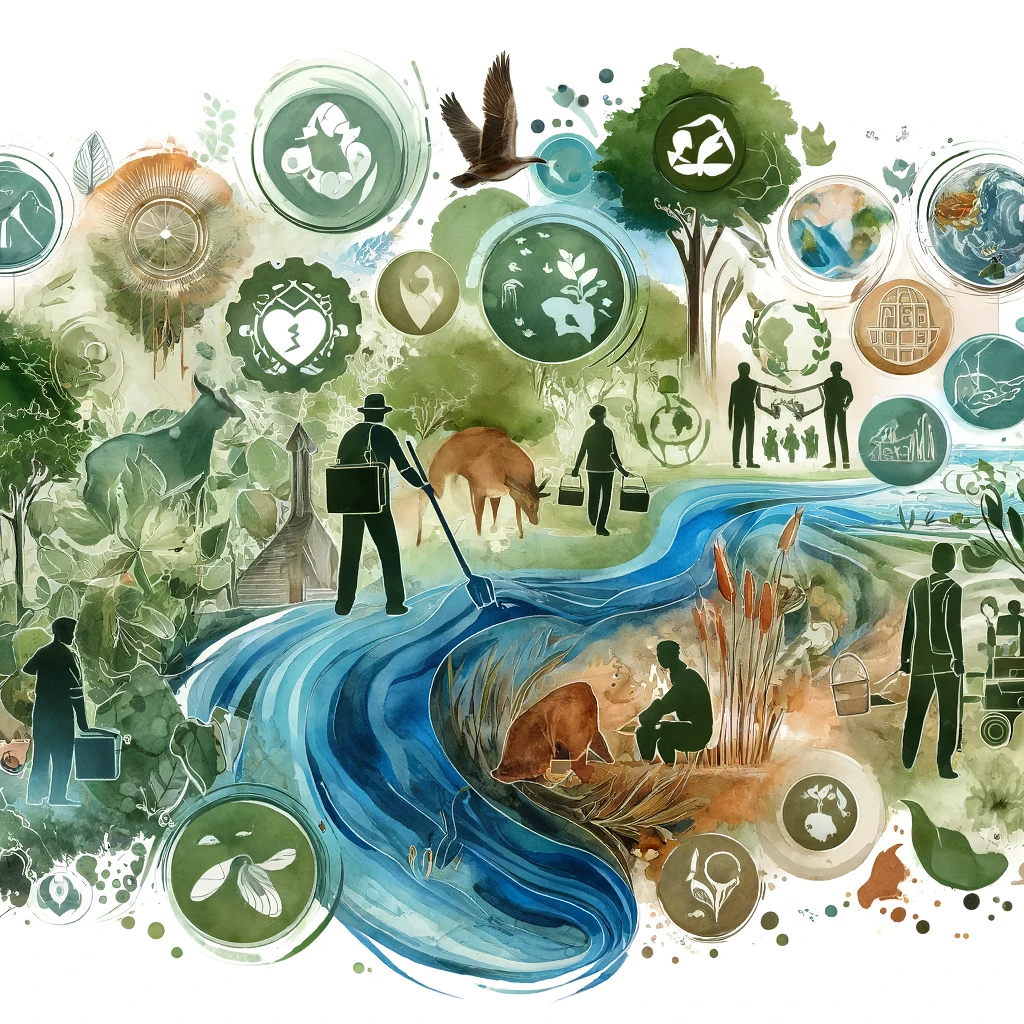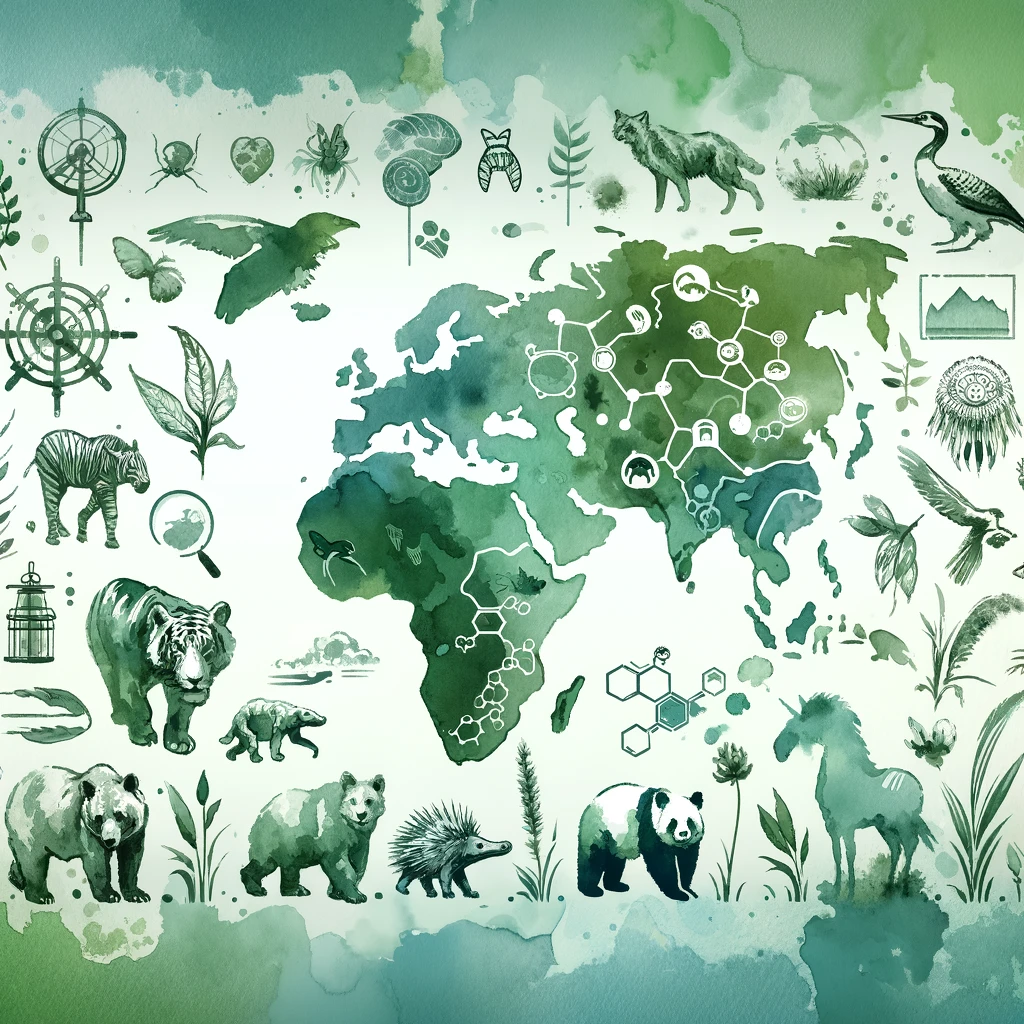Biodiversity, the variety of life on Earth, is essential for the stability and resilience of ecosystems. It supports ecosystem services that are crucial for human survival, such as food, clean water, and medicine. Conservation initiatives are vital to protect biodiversity from threats like habitat loss, climate change, and pollution. This article explores various conservation initiatives, including protected areas, wildlife sanctuaries, international efforts, community-based conservation, and the role of NGOs.

Protected Areas and National Parks
Protected areas and national parks play a pivotal role in biodiversity conservation by preserving natural habitats and protecting wildlife from human disturbances.
- Role in Conservation: Protected areas are regions designated for the preservation of nature and biodiversity. They provide safe havens for flora and fauna, protecting them from habitat destruction, poaching, and other threats.
- Examples from India:
- Jim Corbett National Park: India’s first national park, established in 1936, is renowned for its Bengal tiger population.
- Kaziranga National Park: A UNESCO World Heritage site, Kaziranga is famous for its population of the Indian rhinoceros.
- Sundarbans National Park: Known for its unique mangrove forests and as a critical habitat for the Bengal tiger.
Wildlife Sanctuaries and Reserves
Wildlife sanctuaries and reserves are essential for protecting endangered species and their habitats.
- Importance: These areas are designated specifically for the protection of wildlife and their habitats. They offer a safe environment where species can live and breed without the threat of human interference. Sanctuaries and reserves often focus on conserving specific species or groups of species.
- Examples:
- Ranthambore Wildlife Sanctuary: Known for its tiger population, Ranthambore provides critical habitat and protection for this endangered species.
- Gir Wildlife Sanctuary: The only place in the world where Asiatic lions can be found in the wild.
- Keoladeo Ghana Bird Sanctuary: A major wintering area for migratory birds, including the endangered Siberian crane.
International Conservation Efforts
International cooperation is crucial for addressing biodiversity loss, which often transcends national borders.
- Convention on International Trade in Endangered Species (CITES): CITES aims to ensure that international trade in wild animals and plants does not threaten their survival. By regulating and monitoring trade, CITES helps protect species from over-exploitation.
- Convention on Biological Diversity (CBD): The CBD seeks to conserve biodiversity, sustainably use its components, and share the benefits arising from genetic resources. It provides a global framework for biodiversity conservation efforts.
- Ramsar Convention: Focuses on the conservation and wise use of wetlands, recognizing their importance for biodiversity and human well-being.
Community-based Conservation
Community-based conservation involves local communities in the management and protection of natural resources.
- Chipko Movement (India): A grassroots movement in the 1970s where villagers, especially women, hugged trees to prevent logging. This movement led to increased awareness and the establishment of stricter forest conservation policies.
- Community Forest Management (Nepal): Local communities manage forests, leading to improved forest health, increased biodiversity, and better livelihoods for the people involved.

Role of NGOs in Conservation
Non-Governmental Organizations (NGOs) are crucial in biodiversity conservation through advocacy, education, research, and on-the-ground action.
- Contributions:
- World Wildlife Fund (WWF): WWF works globally to conserve nature and reduce the most pressing threats to biodiversity. Their projects range from protecting endangered species to promoting sustainable practices.
- Greenpeace: Known for its direct action campaigns, Greenpeace focuses on issues like deforestation, climate change, and ocean protection.
- Wildlife Conservation Society (WCS): WCS manages more than 500 conservation projects in over 60 countries, focusing on protecting wildlife and wild places.
Examples of Successful Projects:
- WWF’s Project Tiger: Launched in 1973, this project aimed to protect tigers and their habitats in India. It has significantly contributed to stabilizing and increasing tiger populations.
- Greenpeace’s Save the Arctic Campaign: This campaign aims to protect the Arctic from oil drilling and industrial fishing, preserving its unique biodiversity.
Conclusion
In conclusion, conserving biodiversity requires a multifaceted approach involving protected areas, wildlife sanctuaries, international efforts, community-based initiatives, and the active participation of NGOs. By implementing and supporting these conservation initiatives, we can protect the rich diversity of life on Earth for future generations.



